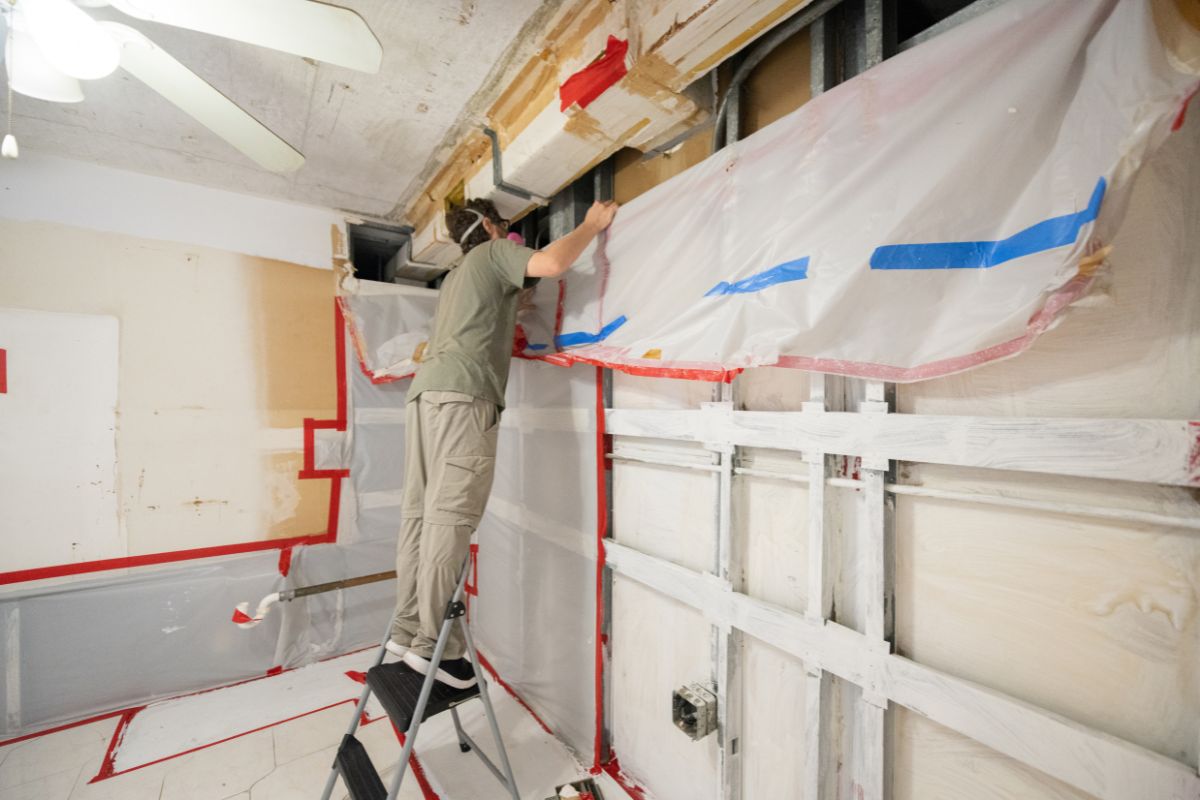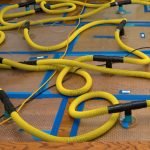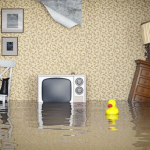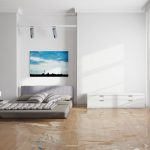
Mold, a challenge faced by many in our humid environment, quietly affects both homes and commercial spaces. In a city where the climate can encourage mold growth, understanding how to manage this issue is crucial for maintaining healthy living and working environments. It’s not just about unsightly spots on walls or ceilings; mold can pose real health risks and cause damage to property over time.
In residential settings, mold often appears in areas with high moisture, like bathrooms or kitchens. In commercial buildings, it can be more discreet yet equally impactful, affecting not only the property but also the wellbeing of those who spend time there. Recognizing the signs of mold and knowing how to effectively prevent it are key skills for property owners and managers.
This guide aims to provide practical advice on identifying, preventing, and addressing mold issues. While some situations can be managed with DIY approaches, others may require professional expertise. Knowing when and how to seek help is an important part of effective mold management.
At Disaster Restoration Singapore (DRS), we specialize in addressing mold problems, but our focus here is to share knowledge and tips that are useful to everyone. Whether it’s a damp spot in a corner of your apartment or concerns about air quality in your office, this guide is designed to help you keep your space healthy and mold-free.
As we delve deeper into the topic, remember that the right knowledge and prompt action are crucial in managing mold. This is particularly relevant in our climate, where mold can be a frequent visitor. Stay tuned for more insights that will assist you in maintaining a mold-free environment in your home or business.
Understanding Mold: What You Need to Know
Mold is a common concern in both homes and commercial properties, thriving in environments where warmth, moisture, and food sources like wood or fabric are present. It exists in various types and colors, ranging from black and green to white and orange. But beyond its appearance, mold’s impact on health and property can be significant.
Health Risks Associated with Mold
Exposure to mold can lead to a range of health issues, particularly affecting those with allergies or asthma. Key health risks include:
- Nasal stuffiness and throat irritation.
- Coughing, wheezing, and respiratory discomfort.
- Eye and skin irritation.
- More serious infections in people with weakened immune systems.
Structural Risks of Mold
Mold doesn’t just affect personal health; it can also harm the structural integrity of buildings. The risks include:
- Decay and damage to building materials, leading to structural weakening.
- Potential for costly repairs and a decrease in property value over time.
Environmental Conditions that Encourage Mold Growth
Different environments can foster mold growth, with specific conditions in residential and commercial settings:
- In homes, leaks from roofs, windows, or pipes, as well as high humidity areas like bathrooms and kitchens, are common culprits.
- In commercial buildings, issues often stem from HVAC systems and areas with condensation or water leaks.
Understanding these aspects of mold is essential for effective prevention and management. Recognizing the signs of mold and addressing any contributing factors early can help maintain a healthier and safer environment in both homes and commercial spaces.
Spotting Mold: Residential vs. Commercial
Identifying mold in different types of properties requires an understanding of the unique characteristics and common problem areas in both residential and commercial settings. Knowing what to look for and where to look is key in early detection and effective management of mold issues.
Identifying Mold in Residential Settings
In homes, mold often makes its appearance in areas where moisture levels are high. Here’s what to look for:
- Common Areas: Bathrooms, kitchens, basements, and around windows are typical mold hotspots.
- Visual Signs: Look for discoloration or fuzzy growth on walls, ceilings, or floors.
- Odor: A musty smell is often a telltale sign of hidden mold.
- Water Damage: Areas with water damage, leaks, or high humidity are prone to mold growth.
Identifying Mold in Commercial Spaces
Commercial properties have different mold challenges, often due to the size and complexity of the building systems. Key areas to monitor include:
- HVAC Systems: Mold can grow in ducts or around leaky HVAC units.
- Large Plumbing Systems: Check for leaks in communal areas like bathrooms or kitchens.
- Storage Rooms and Basements: These less frequented areas can harbor mold unnoticed.
Tips for Routine Checks and Early Detection of Mould
Regular inspections are crucial in both residential and commercial properties to catch mold growth early. Here are some tips:
- Regular Inspections: Schedule routine checks of common mold-prone areas.
- Humidity Control: Keep indoor humidity levels between 30-50% to discourage mold growth.
- Ventilation: Ensure adequate ventilation, especially in areas like bathrooms and kitchens.
- Immediate Response to Water Leaks: Address leaks and spills immediately to prevent mold growth.
- Professional Assessments: Consider periodic professional inspections, especially in large or complex commercial properties.
By staying vigilant and understanding the different ways mold can present itself in various settings, property owners and managers can significantly reduce the risk and impact of mold. Early detection and prompt action are key components of effective mold management.
Mold Removal Essentials: Do’s, Don’ts, and When to Call Mold Professionals
Effectively tackling mold requires a balance of knowledge and caution, especially when deciding between a DIY approach and calling in professionals. Understanding the do’s and don’ts of mold removal, along with recognizing when expert intervention is necessary, is crucial for both homeowners and business owners.
Safe Practices for Handling Minor Mold Problems
When dealing with small areas of mold, there are several safe practices to follow:
- Do Use Proper Protective Gear: Wear gloves, masks, and eye protection to avoid direct contact with mold.
- Do Ventilate the Area: Open windows and doors to provide fresh air and reduce moisture.
- Do Use Appropriate Cleaning Solutions: Mild detergent or a solution of water and vinegar can be effective for small mold problems.
- Do Dispose of Moldy Materials Properly: Items like carpets or ceiling tiles that are mold-infested should be bagged and thrown away.
Common Mistakes in DIY Mold Removal
DIY mold removal can sometimes lead to common mistakes:
- Don’t Ignore the Source of Moisture: Simply cleaning the mold without addressing the underlying moisture problem is a temporary fix.
- Don’t Use Bleach on Porous Surfaces: Bleach does not penetrate porous materials and can contribute to mold regrowth.
- Don’t Paint Over Mold: Painting over mold will not kill it; the mold will continue to grow beneath the paint.
Criteria for Calling in the Mold Experts
Determining when to seek professional help is important. Consider calling in experts when:
- The Mold Area is Large: Generally, if the mold covers an area more than about 10 square feet, it’s time to call professionals.
- There’s Extensive Water Damage: Professionals can better handle situations where mold results from significant water damage.
- Health Concerns are Present: If occupants are experiencing health issues or allergies, professional remediation is recommended.
- In HVAC Systems: Mold in HVAC systems requires professional attention to prevent it from spreading throughout the building.
- In Commercial Settings: Due to the complexity and size of commercial buildings, professional assessment and removal are often necessary.
Whether for a residence or a commercial property, understanding these essentials in mold removal can help in making informed decisions about managing and eradicating mold safely and effectively. Remember, when in doubt, consulting with mold removal experts can provide peace of mind and ensure the health and safety of the building’s occupants.
The Professional Approach to Mold Remediation
When mold issues surpass the scope of DIY solutions, professional mold remediation becomes necessary. This process, applicable to both residential and commercial properties, involves a series of steps executed using advanced tools and techniques, ensuring a thorough and safe resolution to mold problems.
Steps in Professional Mold Remediation
The professional mold remediation process typically includes the following steps:
- Inspection and Assessment: Professionals start with a thorough inspection of the property to assess the extent of the mold problem. This involves identifying both visible mold and hidden sources of moisture.
- Containment: To prevent the spread of mold, the affected area is isolated using physical barriers and negative air pressure.
- Air Filtration: High-efficiency particulate air (HEPA) filters are used to clean the air of mold spores and other particles.
- Mold Removal: Depending on the severity, professionals may use antifungal and antimicrobial treatments to eliminate mold colonies and prevent new growth.
- Removal of Mold-Infested Materials: Materials like drywall or insulation that are too damaged by mold are carefully removed and disposed of.
- Cleaning and Sanitizing: All affected areas, along with belongings, are cleaned and sanitized. This may include using specialized cleaning solutions and techniques to treat various surfaces.
- Restoration: The final step is restoring the property to its original condition, which may involve minor repairs like painting and installing new carpet, or major repairs like reconstructing entire rooms in a building.
Tools, Techniques, and Safety Measures in Mold Remediation
Professional mold remediation involves specialized tools and techniques:
- Advanced Equipment: This includes HEPA vacuums, dehumidifiers, and air scrubbers.
- Safety Gear: Professionals wear protective gear like gloves, masks, and hazmat suits to ensure safety during the process.
- Specialized Techniques: Techniques vary based on the type of mold and the affected materials, ensuring targeted and effective treatment.
Importance of Expert Assessment and Testing
Professional assessment and testing are crucial components of mold remediation:
- Accurate Identification: Experts can accurately identify mold types and growth extents, which is essential for effective treatment.
- Post-Remediation Testing: After remediation, professionals conduct tests to ensure that all mold has been successfully removed, confirming the safety and cleanliness of the environment.
Professional mold remediation offers a comprehensive solution to mold problems, utilizing advanced techniques and equipment to ensure the safety and long-term well-being of both residential and commercial properties. This methodical approach is vital in addressing not just the symptoms but also the underlying causes of mold growth.
Preventing Mold: Strategies for Homes and Businesses
Maintaining a mold-free environment in both residential and commercial spaces requires proactive strategies and regular maintenance. Understanding and implementing these measures can significantly reduce the likelihood of mold growth, ensuring a healthier environment.
Residential Mold Prevention Strategies
In homes, preventing mold involves controlling moisture and ensuring good air circulation:
- Control Humidity: Use dehumidifiers and air conditioners to keep indoor humidity levels between 30-50%.
- Ventilate: Ensure proper ventilation in high-moisture areas like bathrooms and kitchens. Use exhaust fans during and after showers or cooking.
- Fix Leaks Promptly: Address leaks in roofs, walls, or plumbing quickly to prevent moisture accumulation.
- Dry Wet Areas Immediately: Wipe up spills and dry out wet areas promptly, including damp carpets and upholstery.
- Optimize Air Flow: Regularly open doors and windows to allow air circulation throughout the home.
Commercial Mold Prevention Measures
Commercial properties, due to their size and complexity, require additional considerations:
- Regular HVAC Maintenance: Ensure HVAC systems are inspected and cleaned regularly to prevent moisture buildup and mold spread.
- Inspect and Repair Building Exteriors: Regularly check and repair any leaks or damages in the building’s exterior that could allow water intrusion.
- Manage Humidity in Large Spaces: Use industrial-grade dehumidifiers in large spaces like warehouses to control humidity levels.
Regular Maintenance and Environmental Control Strategies
Both residential and commercial properties benefit from regular maintenance and environmental controls:
- Routine Inspections: Conduct regular inspections of potential mold-prone areas and address any issues immediately.
- Use Mold-Resistant Products: Consider using mold-resistant paint, drywall, and building materials, especially in new constructions or renovations.
- Educate on Mold Awareness: In commercial settings, training staff to recognize signs of mold and moisture issues can be a proactive step in prevention.
By implementing these strategies, homeowners and business owners can create environments less conducive to mold growth, ensuring the health and longevity of their properties. Regular vigilance and maintenance are key to preventing mold and maintaining a safe, healthy environment.
Choosing a Mold Removal Service for Your Needs
Selecting the right mold removal service is critical to effectively addressing your mold issues, whether in a residential or commercial property. Here are key factors and questions to consider when choosing a service provider.
Key Factors in Selecting a Mold Removal Service
- Expertise and Experience: Look for a service with a proven track record in both residential and commercial mold remediation.
- Certifications and Training: Ensure the service provider has trained and certified technicians.
- Insurance and Licensing: Verify that the company is properly licensed and insured to protect your property during the remediation process.
Questions to Ask Mold Remediation Providers
When evaluating potential services, ask specific questions to gauge their suitability:
- What is your experience with properties like mine? This helps assess their familiarity with either residential or commercial mold issues.
- Can you provide references or testimonials? Past customer experiences can offer insight into the company’s reliability and quality of work.
- What safety measures do you implement during the remediation process? Understanding their safety protocols is crucial for the well-being of occupants.
Disaster Restoration Singapore’s Mold Remediation Capabilities
At DRS, we pride ourselves on our ability to expertly handle mold issues in both residential and commercial settings. Our team is equipped with the necessary skills, experience, and tools to provide thorough and reliable mold remediation services. We understand the unique challenges each sector faces and tailor our solutions to meet your specific needs, ensuring a safe and mold-free environment.
Choosing the right mold removal service is a decision that impacts the health and safety of your property. Take the time to assess and select a provider that aligns with your requirements and offers the assurance of a job well done.
Success Stories: Overcoming Mold in Singapore Homes and Offices
Transforming an HDB Flat: A Mold Remediation Success Story
One of our notable residential projects involved addressing a challenging mold issue in an HDB flat. The occupants were facing persistent mold problems in the bathroom and kitchen areas, primarily due to poor ventilation and ongoing moisture issues. Our team conducted a thorough investigation to identify the root causes of the mold growth. We meticulously removed all mold traces, employing safe and effective techniques, and then implemented preventive measures. These measures included enhancing ventilation and sealing areas prone to moisture leakage. After our intervention, the flat was not only free from mold but also experienced a significant improvement in overall air quality, much to the satisfaction of the residents.
Revitalizing a Raffles Place Office: A Commercial Mold Removal Case
In a prominent commercial project, DRS was tasked with resolving a severe mold problem in an office located in Raffles Place. The mold infestation was extensive, particularly in the HVAC system and around window areas, adversely affecting the indoor air quality and the health of office staff. Our team utilized advanced remediation techniques to thoroughly eradicate the mold. Post-remediation, we provided recommendations for maintaining optimal moisture levels and air quality. The successful resolution of the mold issue led to a marked enhancement in the office environment, contributing to improved employee comfort and productivity. These examples demonstrate DRS’s capability to effectively handle mold challenges in various environments, ensuring healthier spaces for both living and working.
Protect Your Space from Mold Today
Mold issues, if left unaddressed, can compromise the health and structural integrity of any property, be it residential or commercial. Embracing proactive measures and professional assessments is key to effectively managing these challenges. At Disaster Restoration Singapore, we’re committed to providing top-notch mold removal services tailored to your unique needs. Ready to safeguard your space against mold? Connect with us at 6241 9443, drop an email to [email protected], or send a message via WhatsApp at +65 9321 9321. Let’s work together to ensure a healthier, mold-free environment in your home or business.



